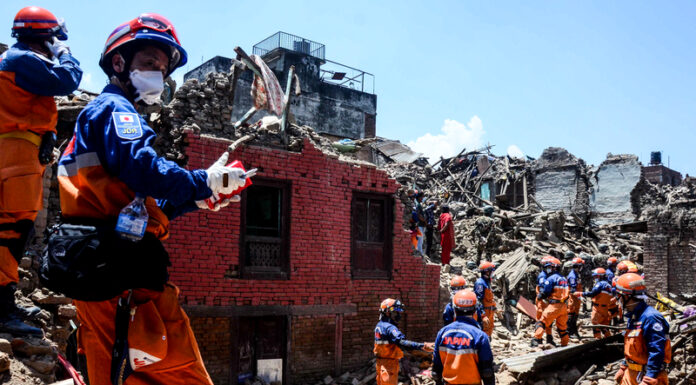The serene night of November 3, 2023, in Western Nepal was abruptly interrupted by a 6.4 magnitude earthquake, which hit the Jajarkot District at 11:47 p.m., leading to the tragic loss of at least 157 individuals. Search and rescue operations are currently ongoing, with emergency crews working diligently despite the significant hurdles posed by blocked roads and landslides, which are hindering access to affected areas and slowing down the arrival of essential assistance.
The tremor was felt across the region and even reached New Delhi, India, marking it as the most lethal seismic event since a devastating 2015 earthquake, which resulted in approximately 9,000 fatalities.
Medical facilities in both Jajarkot and Rukum Districts are overwhelmed, treating over 375 injured individuals. Many residents, forced out of their homes due to the extensive damage or destruction caused, had no choice but to endure the night outdoors.
Rescue missions, led by the Nepalese Army and Police, are concentrating on the remote areas that have been isolated by the disaster. These efforts are critical as ongoing aftershocks pose additional risks to the already precarious situation.
The Prime Minister of Nepal, Pushpa Kamal Dahal, has taken an active role in the management of the relief operations, providing much-needed assistance to those affected by the earthquake.
The infrastructure has suffered greatly; roads and communication networks have been disrupted, significantly challenging the relief operations. Some of the severely wounded have been transported by air to hospitals in Kathmandu, yet these efforts are being challenged by the darkness and continuous aftershocks.
In response to the calamity, the international community has extended humanitarian aid to support the Himalayan nation. While comprehensive details regarding the extent of the damage and the number of casualties are still being gathered, some success has been achieved in restoring electricity and telecommunications in certain areas.
As authorities anticipate the death toll to rise, this earthquake is now recorded as one of the most severe in Nepal’s recent history. Its effects have been felt as far as the Gangetic plains of northern India, where the seismic activity has been intensified by the soft soil.
This tragedy echoes the 2015 earthquakes, which prompted significant changes to Nepal’s building regulations and emergency response strategies, underscoring the nation’s ongoing vulnerability to such natural disasters.








